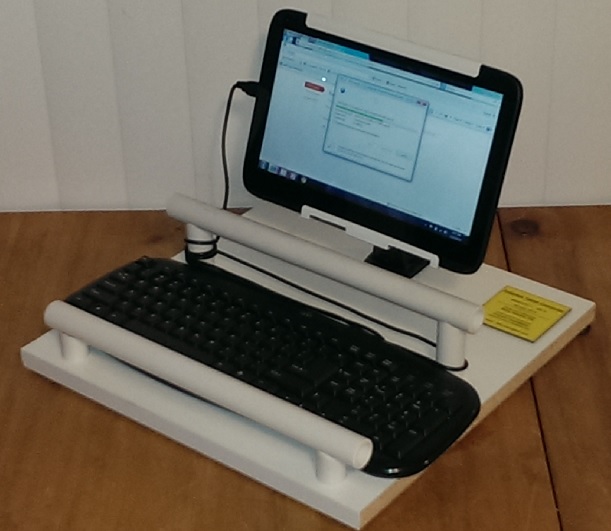
Adapted Tablet Computers

High school students with dystonia were having difficulty using a standard computer. With a standard keyboard, to enter commonly used symbols into a spreadsheet program, for example, it was necessary to use either the StickyKeys option or hold down the shift key. Further, the use of a mouse or trackball was difficult. These issues were addressed with adaptations.
First, a USB keyboard with a numeric keypad eliminated the need to use the shift key for common spreadsheet symbols. Second, a tablet computer with a touchscreen eliminated the need to manipulate a mouse. Pointing and touching the screen directly is now possible. Third, the computer and keyboard were mounted on a base that provides stability. Fourth, the computer is mounted to the base using a pivot that allows the scree to be positioned for good manual access and minimization of lighting glare. Finally, horizontal handrest bars in front of both the keyboard and touchscreen provide a point of reference for the hands in accessing those components.
The computers were loaded with free software available at www.ninite.com.
The base and computer mounting plate were made using plastic coated particle board shelving material. The computer was mounted using plastic wallboard extrusion attached using double-sticky foam or rubber. Cutouts provide for proper ventilation. The support bars are plastic pipe. These components and related hardware are all available at hardware stores. The pivot mount was designed for mounting speakers and is also commonly available.
For each student, three systems were fabricated. One was for the school home room, one for the computer lab, and one for use at home.
For additional information contact:
Barry Romich, P.E.
bromich@aol.com
July 2004